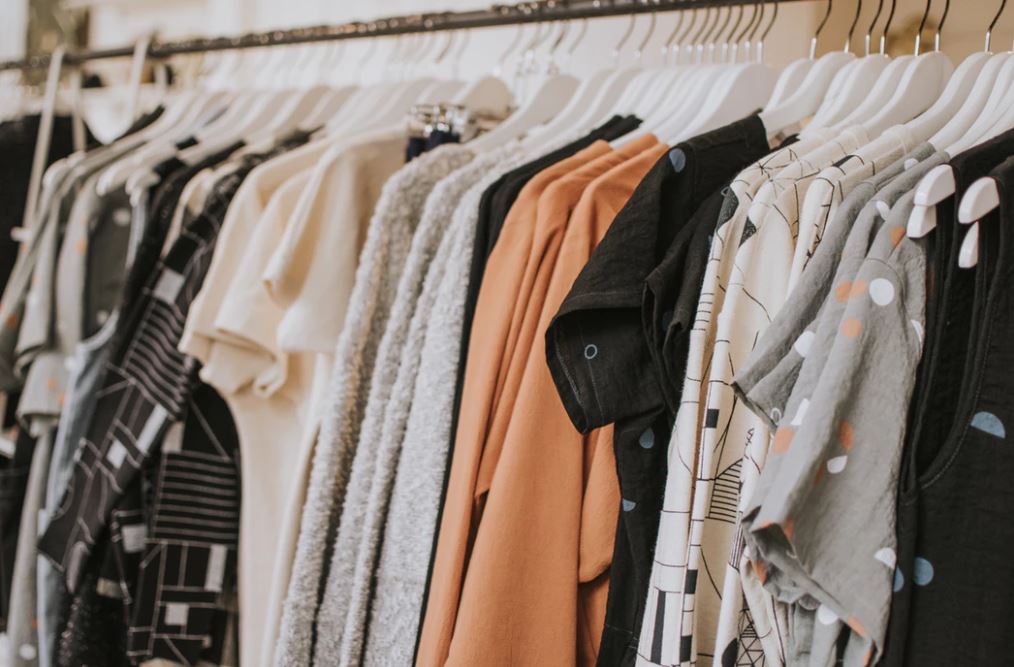Sustainability January 4, 2019
Make a sustainable fashion statement on a budget with these five stores.


Sustainable clothing brands are the new way to save the environment with a statement.
Specifically, a fashion statement.
Our planet’s probably not at the forefront of your mind when you’re shopping, but it should be. Clothing companies directly impact the environment. Farmers often use toxic pesticides and insecticides to create the conventional cotton found in most clothes. According to the National Resources Defense Council, organic cotton minimizes these pesticides and creates a better quality of soil.
While The Guardian reported in 2011 that organic cotton uses a “lower net water use” due to this reduction of chemicals, recent critics of the substance have pointed out that this cotton is less genetically modified. Therefore, the crops have a lower yield, which means more resources are utilized to make them.
However, 2015 data analysis determines that organic cotton, or “better cotton,” is more efficient in terms of “inputs use efficiency” in the Punjab province of Pakistan. In other words, organic cotton yields more crops for overall resources, including pesticides, fertilizers and irrigation water. In contrast to data determined by Cotton Inc, this study found that organic cotton farmers used irrigation water less frequently than conventional cotton.
Despite somewhat conflicting data around water use (perhaps due to the focus on different locations), organic cotton is still the best environmental alternative. They use significantly less inorganic fertilizers and pesticides, which can harm our soils and lead to groundwater pollution.
Toxic dyes also affect the environment. In 2014, Greenpeace found that there was a common use of toxic chemicals in clothing produced by certain textile companies. These toxic dyes can seriously affect us but also leak out in the wash, affecting our waters.
But we can make steps towards a greener future. With sustainable fashion on the rise, we found brands that protect us and the planet.
The best part about these brands? They don’t have to break the bank.
Here are a few stores that can help you stay on a budget, fashionable and environmentally friendly.
PACT revolves around “humankind,” practicing fair trade, utilizing eco-friendly materials and producing organic cotton.
Their pride in organic cotton is well-deserved. PACT claims that this fabric can use up to 95 percent less water than conventional cotton during a wash, which helps conserve our water. The fabric also doesn’t pollute our water, since it’s free of the harsh chemicals, bleaches and dyes found in most other materials.
Along with saving water, the clothes save you cash! Items usually range between $15 to $40.
H&M is known for their quick timing in fashion trends, but their sustainability goals were a long-term evolution. Decades ago, they started a mission titled Nature’s Calling that quickly died out. In 2011, their H&M Conscious Collection branch picked up where Nature’s Calling left off, and the collection is still running to this day.
In an interview with Vogue, Christy Turlington Burns states that organic linen, cotton and silk as well as recycled polyester and regenerated nylon fiber make up the 2018 collection. Launched in late April, you can get your H&M Conscious items today!
The Conscious Exclusive dresses are particularly breathtaking, but they’re also hundreds of dollars. If you’re looking for something cheaper, check out this $13 jersey top and these $20 crêped pants!
Patagonia is all about the outdoors, so it’s natural that the environment has captured the company’s attention. In their products, they use hemp, organic cotton, reclaimed cotton and a variety of recycled fabrics.
Patagonia is also “proud to offer more Fair Trade products than any other apparel brand.”
The only problem with Patagonia is that supporting Fair Trade and using high-quality, sustainable material comes with a price, and it’s fairly high. But if you’re willing to pay it, check out this fantastic variety of clothes perfectly suited to your outdoorsy needs.
Everlane claims to partner with ethical factories around the world. And, they also source only the finest materials. Radical Transparencies with their customers let them know the stories of the materials and the process the clothing goes through.
Alternative Apparel emphasizes “fabric first” and a love for the environment. Among the ways they keep the planet safe, they use “post-consumer recycled polyester,” “organic cotton,” “low-impact dyes” and “eco-friendly packaging.” With these initiatives, Alternative Apparel conserves 2,100 trees, 400 cubic yards of landfill, 860 thousand gallons of water and 120 tons of carbon dioxide each year.
They also strive for ethical labor by making sure all their factories comply with Fair Labor Association regulations. Many of their factories are also WRAP-certified, which means they comply with WRAP’s workplace standards.
Prices can spike up to $180, but the cost of everyday clothes usually settles around $30 to $60. If that’s a little too expensive for you, check out the sale section! Most of the items are in the $20 range.
While fashion trends come and go, environmental issues remain. Sustainable clothing is more than a trend; it’s a movement. With these brands, you can be a part of it!
Saving the world has never been cuter.